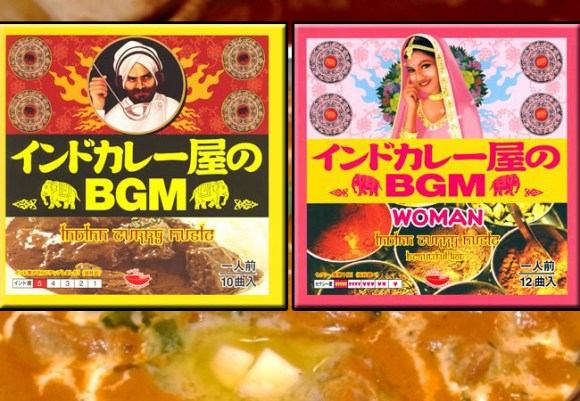
While most people associate curry with India, it might be surprising to learn that it is a big deal in Japan as well. “How big?” you ask?
■ Where curry is king
For those who have never been to Japan, it might comes as a surprise that Indian restaurants – or more specifically curry restaurants – are really popular. However, just staying one night in an urban area of the country will reveal how prevalent they are.
Restaurant cataloging website Tabelog lists 21,188 establishments selling curry in Japan, considerably more than there are places serving pasta (14,345) or okonomiyaki (17,382). It’s not hard to believe that these spiced dishes could almost be considered a “Japanese food” at this point considering there is such a wide range of curries and side dishes served in generous portions at reasonable prices.
■ And you may ask yourself, “How did it get here?”
Curry first made its way to Japan around the turn of the 19th century when Japan had opened its borders for easier international trade. Curry was indirectly introduced here by the British who had co-opted it from their then-colony of India. As such, there were some changes such as a lighter and sweeter taste, which caught on well in Japan.
▼ And the changes didn’t stop there…
The British curry, or “curry rice” (kareraisu) also referred to simply as “curry” or (kare), became a permanent fixture in Japanese society and opened the door for more authentic “Indian curry” (indo kare) restaurants to set up shop in the land of the rising sun. Although their curries are closer to home, they’ll still serve sweeter and milder variations that the people here have come to know and love.
However, whenever I ordered that kind of curry the South Asian waiter would usually laugh at me.
■ Come for the curry, stay for the ambiance
Indian curry restaurants are often small independent establishments and can also include shops run by people from Nepal, Bengal, or other South Asian countries. While these differences do bring some subtle variety to the flavor and decorations to these eateries, they all tend to be extremely similar to one another.
They all have the same color scheme which runs from mustard yellow to orange or brown. They are all adorned with posters and art from their native countries, and they all pipe in Indian music like that Panjabi MC song from a while back (the version without Jay-Z).
■ Indo Kareya No BGM
Whenever I visit one of these places the music always stands out for me. It’s a strange mix of feelings. I’m not really familiar with Indian music so on a whole it tends to sound alien to me, and yet I’ve gone to Indian curry restaurants enough times that these songs also feel very familiar.
I think a lot of Japanese people feel the same way, which is why Victor Entertainment released a series of CDs featuring the most frequently played songs in Indian curry restaurants in Japan. Different albums of Indian Curry Shop Background Music (Indo Kareya No BGM) contain different areas of Indian music such as Hold the Rice which highlights Indian classical music or Spicy with its more up-tempo and bass-heavy tracks possibly found in the more trendy curry places.
There’s also The Road to Maharaja which contains songs by superstar Rajinikanth.
https://www.youtube.com/watch?v=XTAe19be26c
A new edition, Indian Curry Shop Background Music: 2020 will be released on 21 September. It carries an updated track list of the songs that soak into our brains like so much sauce into the crevices of naan.
And so like pizza in America or McSpaghetti in the Philippines, a foreign flavor has become a deeply entrenched part of the Japanese culinary culture. And with the advent of curry shop CDs, who knows if eventually a way will be paved for Indian music or Bollywood to find a home here as well.
Stranger things have happened, as this website often attests to.
Source: NPR the salt (English), Tabelog 1, 2, 3, Hachima Kiko, Amass, Victor Entertainment (Japanese)
Curry Images © RocketNews24
Album Images: Amazon 1, 2, 3, 4, 5
Video: YouTube/Motivo Records, YouTube/Cinecurry Tamil

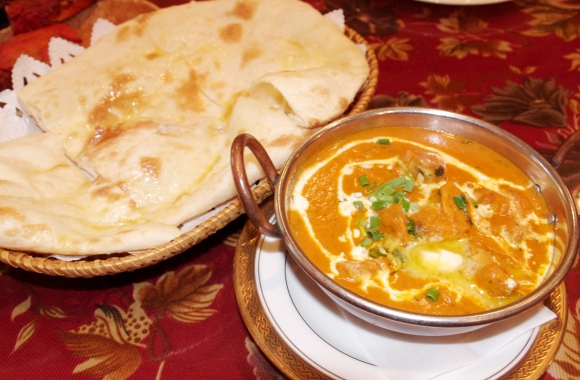
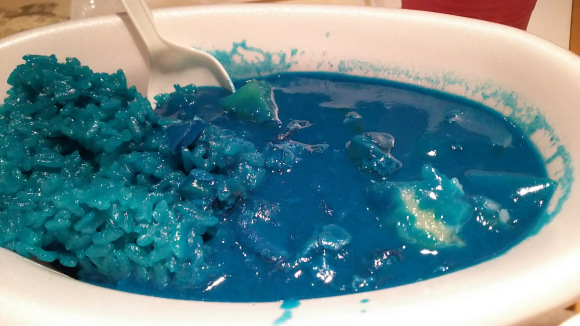
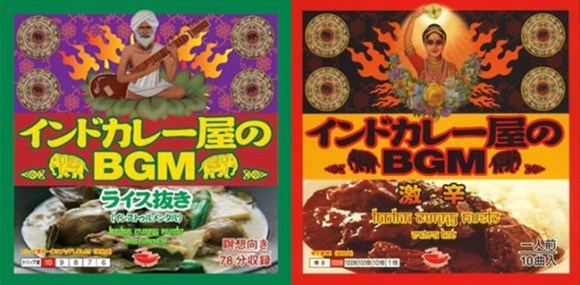
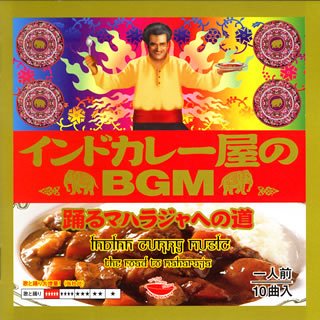
 This Hokkaido-local curry chain serves curry so good it ought to be popular all over Japan
This Hokkaido-local curry chain serves curry so good it ought to be popular all over Japan Hayao Miyazaki says Happy New Year to Studio Ghibli fans with new art for Year of the Horse
Hayao Miyazaki says Happy New Year to Studio Ghibli fans with new art for Year of the Horse Pizza Hut Japan’s hot lucky bags are perfect for a New Year’s pizza party
Pizza Hut Japan’s hot lucky bags are perfect for a New Year’s pizza party This is possibly the coziest train in all Japan thanks to onboard hot spring footbaths【Pics】
This is possibly the coziest train in all Japan thanks to onboard hot spring footbaths【Pics】 Survey finds more than 70 percent of Japanese children have an online friend
Survey finds more than 70 percent of Japanese children have an online friend Check out this 8m robot that appeared on Tokyo’s waterfront【Video】
Check out this 8m robot that appeared on Tokyo’s waterfront【Video】 Here’s what to expect if it’s your first time seeing kabuki at Tokyo’s Kabuki-za Theater
Here’s what to expect if it’s your first time seeing kabuki at Tokyo’s Kabuki-za Theater 7-Eleven Japan starts new temporary luggage storage service in over 300 branches
7-Eleven Japan starts new temporary luggage storage service in over 300 branches How to turn cold McDonald’s fries into the best hash browns you’ve ever tasted
How to turn cold McDonald’s fries into the best hash browns you’ve ever tasted We found possibly the quietest Japanese-style hotel in Tokyo’s bustling Shinjuku district
We found possibly the quietest Japanese-style hotel in Tokyo’s bustling Shinjuku district Japanese manhole covers become a hit with foreign tourists in off-the-beaten path Tokyo area
Japanese manhole covers become a hit with foreign tourists in off-the-beaten path Tokyo area Starbucks Japan ready to get Year of the Horse started with adorable drinkware and plushies【Pics】
Starbucks Japan ready to get Year of the Horse started with adorable drinkware and plushies【Pics】 7-Eleven Japan’s ramen-cooking robot whipped us up a bowl of noodles【Taste test】
7-Eleven Japan’s ramen-cooking robot whipped us up a bowl of noodles【Taste test】 Cyberpunk anime meets traditional culture in Ghost in the Shell gold leaf Japanese changing screens
Cyberpunk anime meets traditional culture in Ghost in the Shell gold leaf Japanese changing screens 7 great places to see Mt. Fuji from without having to climb it
7 great places to see Mt. Fuji from without having to climb it Hello Kitty Choco Egg figures are an adorable trip through three periods of Japanese pop culture【Pics】
Hello Kitty Choco Egg figures are an adorable trip through three periods of Japanese pop culture【Pics】 Japan’s otoshidama tradition of giving kids money at New Year’s gets a social welfare upgrade
Japan’s otoshidama tradition of giving kids money at New Year’s gets a social welfare upgrade Lacquerware supplier to emperor of Japan and Pokémon team up for new tableware
Lacquerware supplier to emperor of Japan and Pokémon team up for new tableware Sumo Sanrio! Hello Kitty and pals team up with Japan Sumo Association for new merch【Pics】
Sumo Sanrio! Hello Kitty and pals team up with Japan Sumo Association for new merch【Pics】 Can a dirty butthole make you filthy rich in Japan? We’re starting a New Year’s lottery experiment
Can a dirty butthole make you filthy rich in Japan? We’re starting a New Year’s lottery experiment Disillusionment at Tsukiji’s tourist-target prices led us to a great ramen restaurant in Tokyo
Disillusionment at Tsukiji’s tourist-target prices led us to a great ramen restaurant in Tokyo Starbucks teams up with 166-year-old Kyoto doll maker for Year of the Horse decorations【Photos】
Starbucks teams up with 166-year-old Kyoto doll maker for Year of the Horse decorations【Photos】 Tokyo considering law requiring more trash cans following litter increase in heavily touristed area
Tokyo considering law requiring more trash cans following litter increase in heavily touristed area Tokyo’s Tsukiji sushi neighborhood asks tour groups to stay away for the rest of the month
Tokyo’s Tsukiji sushi neighborhood asks tour groups to stay away for the rest of the month Nintendo’s Kirby now delivering orders at Kura Sushi restaurants, but not in Japan
Nintendo’s Kirby now delivering orders at Kura Sushi restaurants, but not in Japan Tokyo event lets you travel back in time, for free, to celebrate 100 years since Showa era start
Tokyo event lets you travel back in time, for free, to celebrate 100 years since Showa era start Sanrio theme park in Japan announces plans to expand into a Sanrio resort
Sanrio theme park in Japan announces plans to expand into a Sanrio resort Japan may add Japanese language proficiency, lifestyle classes to permanent foreign resident requirements
Japan may add Japanese language proficiency, lifestyle classes to permanent foreign resident requirements Survey asks foreign tourists what bothered them in Japan, more than half gave same answer
Survey asks foreign tourists what bothered them in Japan, more than half gave same answer Japan’s human washing machines will go on sale to general public, demos to be held in Tokyo
Japan’s human washing machines will go on sale to general public, demos to be held in Tokyo Japan’s deadliest food claims more victims, but why do people keep eating it for New Year’s?
Japan’s deadliest food claims more victims, but why do people keep eating it for New Year’s? We deeply regret going into this tunnel on our walk in the mountains of Japan
We deeply regret going into this tunnel on our walk in the mountains of Japan Studio Ghibli releases Kodama forest spirits from Princess Mononoke to light up your home
Studio Ghibli releases Kodama forest spirits from Princess Mononoke to light up your home Major Japanese hotel chain says reservations via overseas booking sites may not be valid
Major Japanese hotel chain says reservations via overseas booking sites may not be valid Put sesame oil in your coffee? Japanese maker says it’s the best way to start your day【Taste test】
Put sesame oil in your coffee? Japanese maker says it’s the best way to start your day【Taste test】 No more using real katana for tourism activities, Japan’s National Police Agency says
No more using real katana for tourism activities, Japan’s National Police Agency says Starbucks Japan reveals new sakura drinkware collection, inspired by evening cherry blossoms
Starbucks Japan reveals new sakura drinkware collection, inspired by evening cherry blossoms Updated cherry blossom forecast shows extra-long sakura season for Japan this year
Updated cherry blossom forecast shows extra-long sakura season for Japan this year
Leave a Reply